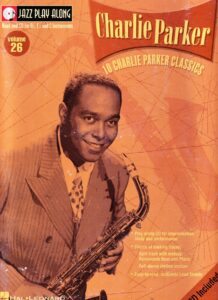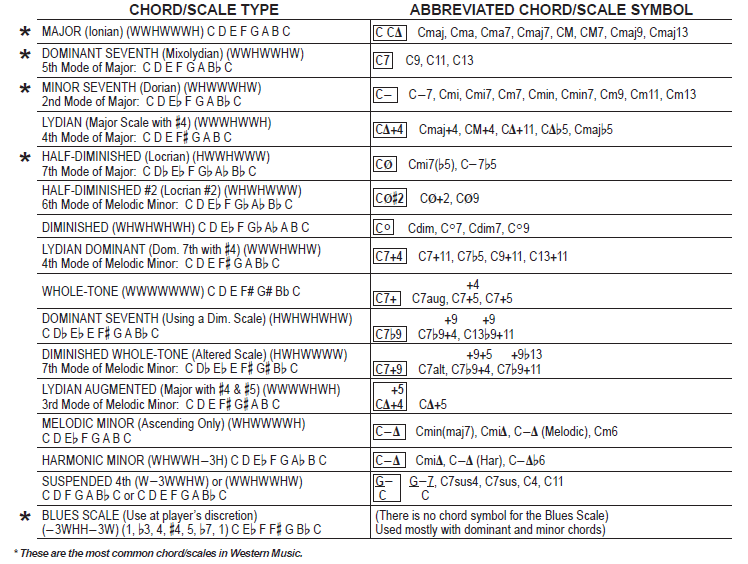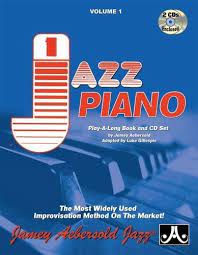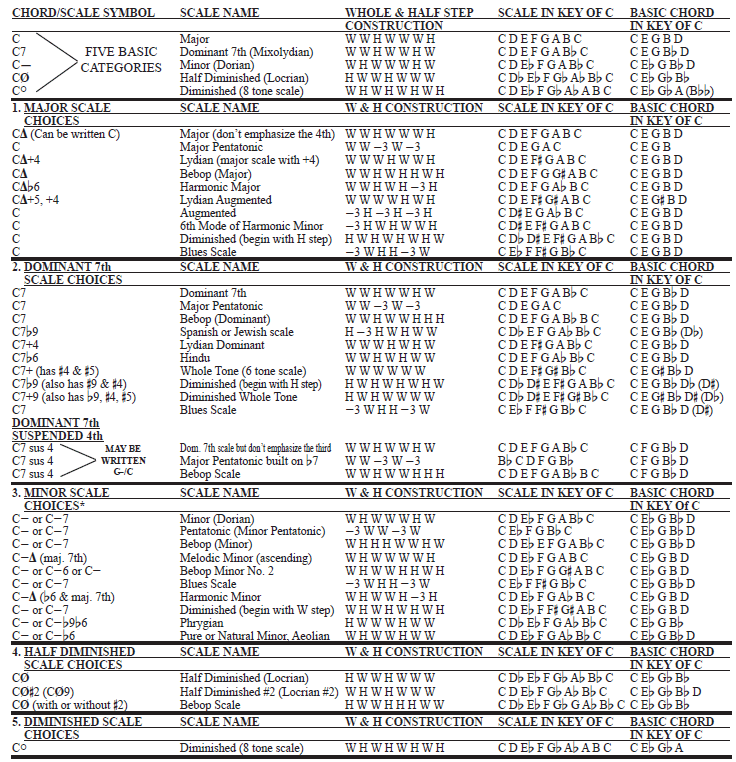Come join us now, and enjoy playing your beloved music and browse through great scores of every level and styles!
Can’t find the songbook you’re looking for? Please, email us at: sheetmusiclibrarypdf@gmail.com We’d like to help you!
What are the Jazz Play Along (or Backing or Background Tracks) and how to use them?
Background tracks, bases, backing tracks, or Jazz Play Along are a system of audio (CD or mp3) devised by saxophonist Jamey Aebersold in the seventies. They allow you to play over a recording made by a rhythm section made up of well-known jazz musicians.
Jamey Aebersold series
In the Jamey Aebersold series the backing tracks Play Along are recorded by musicians, but they don’t play the melody of the jazz standard, only the harmony and rhythm.
Balance can be used to mute the piano or bass.
The different audios are organized by composer, by groups of jazz standards, or by scales and harmonic progressions.
The Aebersold’s complete list of sets (PDF book + audio mp3) can be found here.
Here you can download the Aebersold Rapid Reference to find Tunes:
Jazz Play Along (PDF Book and mp3 audio tracks)
This series (PDF + mp3 audios) include all kind of Jazz genres and artists: Duke Ellington, Rodgers Hart, Irving Berlin, Miles Davis, John Coltrane, Herbie Hancock, Count Basie, Cole Porter, Charlie Parker, Bill Evans, Lennon & McCartney, Stevie Wonder, Sonny Rollins, Charles Mingus, George Gershwin, Paul Desmond, Jimi Hendrix, Frank Sinatra, etc. etc.
The complete list of Play Along sets (PDF book + audio mp3) can be found here.
Here, you can download the Tune Funder document:
The following are example videos of the Jazz and Rock Play Along:
Watermelon Man, Herbie Hancock, Jazz Play Along
Santana – Jazz Play Along Black Magic Woman (Guitar)
JOHN COLTRANE – GIANT STEPS (Jazz Play Along)
Play Guitar with U2 (1984-1987) – “With Or Without You” audio background play along (sheet music)

What is a jazz backing track?
The dream of any musician after beginning to master his instrument is to play with talented musicians. Today it is very easy to get in touch with like-minded people. The Internet paved the way for the dream of forming a band to come true. Even so, it is not easy to find musicians who have the same feeling, especially in a genre like Jazz. It is very important that the members complement each other.
A backing or background track (or play along) is an audio track that usually lacks an instrument. In this way you can play or improvise accompanied by the other instruments or the voice. Therefore, musicians use the jazz tracks where their instrument is absent. That’s how easy it is to play all the classics in the company of a whole jazz group!
Best Sheet Music download from our Library.
Why is a jazz play along backing track worth it?
Hardly any other genre has such a unique and improvised rhythm as Jazz. Therefore, each group must be perfectly coordinated and in harmony with each other. If you want to embark on the path of Jazz as a musician, you have to take the time to practice your instrument together.
Sometimes it’s not easy to open up to other musicians, especially as a beginner. With a backing track you practice informally and at the same time you are part of a jazz group. A backing track is the band that supports you unconditionally to strengthen your talent! So grab your instrument and practice alongside the greats.
Jazz Play Along offers you many sheet music with Jazz backing tracks, be it Smooth Jazz, Fusion, classic or Latin Jazz. You can choose what you like best! Play the part of your instrument and play the best Jazz standards of all time!
The Jazz Play Along helps you to improvise in classic Jazz style. Browse through our catalogs of Jazz Play Along backing tracks and discover all the classics of the genre or the most influential artists.
The Jazz Play Along best jazz backing tracks are for all instruments: piano, guitar, trumpet, etc.
Rock Play Along
The Play Along Series (book and audios) are also available for ROCK and POP music, and for piano and guitar, as well:
Bossa Nova, Bon Jovi, Jobim, David Bowie, U2, Elton John, George Benson and many more….
Please, subscribe to our Library.
If you are already a subscriber, please, check our NEW SCORES’ page every month for new sheet music. THANK YOU!
Browse in the Library:
Or browse in the categories menus & download the Library Catalog PDF:
JAZZ PLAY ALONG NOMENCLATURE
LEGEND: + or # = raise 1/2 step; — or b = lower 1/2 step; H = Half Step; W = Whole Step
Δ = Major scale/chord or major seventh (CΔ).
A (7) after a letter means to lower the 7th note of the scale, making it a Dominant 7th quality (C7).
A dash (—) when located beside a letter means to lower the third and seventh of the scale 1/2 step, thus making it a minor tonality (Dorian minor) (C—).
Ø means half-diminished (CØ).
C—Δ means a minor scale/chord with a major 7th. —3
means 3 half-steps (a minor 3rd).
A ° beside a letter means diminished (C° = diminished scale/chord).

Remember: 2nd’s are the same as 9th’s, 4th’s are the same as 11th’s, 13th’s are the same as 6th’s.
Example: Key of C … the 2nd, D, is the same as the 9th, D.
Often a composer will simply write their preferred name of the scale beside the chord symbol, such as Eb—Δ (melodic minor), F— (phrygian), F— (phry).
INTRODUCTION TO THE SCALE SYLLABUS
Each chord/scale symbol (C7, C—, CΔ+4, etc.) represents a series of tones which the improvisor can use when
improvising or soloing.
These series of tones have traditionally been called scales. The scales listed here are the ones you’ll most often hear musicians play.
Here it’s the list of the Scale Syllabus in the key of C Concert, so you can have a frame of reference and can compare the similarities and differences between the various chords/scales.
This SCALE SYLLABUS is intended to give the improvisor a variety of scale choices which may be used over any chord – major, minor, dominant 7th, half-diminished, diminished and suspended 4.
Western music, especially jazz and pop, uses major, dominant 7th, Dorian minor and Blues scales and chords more than any other.
Scales and chords used less often are the half-diminished, diminished and suspended 4. If we agree on these five chord/
scale families as being the most predominant, then we can set up categories and list substitute scales beneath
each heading … see the Scale Syllabus page. You should also check out Aebersold’s Volume 26 “The Scale Syllabus” for more help with scales.
Each category begins with the scale most closely resembling the chord/scale symbol given to the left. The scales are arranged according to the degree of dissonance they produce in relation to the basic chord/scale sound.
Scales near the top of each category will sound mild or consonant. Scale choices further down the list will become
increasingly tense or dissonant. Each player is urged to start with the scales at the top and with practice and experimentation gradually work his way down the list to the more dissonant or tension-producing scales.
You should work with a new scale sound on your instrument until your ears and fingers become comfortable with all
the tones in the scale. Also, try singing the scale with your voice. Improvise with your voice over the scale you are
learning and then reproduce on your instrument what your voice has created.
Music is made of tension and release. Scale tones produce either tension or relaxation. The improviser’s ability
to control the amount and frequency of tension and release will, in large measure, determine whether he is successful
in communicating to the listener.
Remember – you, the player, are also a listener! Read Aebersold’s Volume 1 JAZZ:
How To Play And Improvise for a more detailed explanation of tension and release in melodic development.

Any of the various practice procedures and patterns listed in Volumes 1, 2, 3, 21, 24 or 84 can be applied to any of
the scale choices listed in this Scale Syllabus. Needless to say, any scale you want to learn should be transposed and practiced in all twelve keys.
The column on whole and half step construction are listed for each scale on the syllabus should prove helpful when transposing a scale to any of the twelve keys.
Several Play Along sets offer you an opportunity to practice the various scales in all twelve keys. They are:
Vol. 24 Major & Minor; Vol. 84 Dominant 7th Workout; Vol.21 Gettin’ It Together; and Vol.16 Turnarounds,
Cycles & II/V7’s.
You might also check out the Play Alongs which have tunes in all keys: Vol. 42 Blues In All Keys; Vol. 47 Rhythm In All Keys; Vol. 57 Minor Blues In All Keys; and two more volumes, Vol. 67 Tune Up and Vol. 68 Giant Steps – each has several classic tunes in all twelve keys.
Scales and chords are the backbone of our music and the better you equip yourself, the more fun you will have
playing music.
Come join us now, and enjoy playing your beloved music and browse through great scores of every level and styles!
Can’t find the songbook you’re looking for? Please, email us at: sheetmusiclibrarypdf@gmail.com We’d like to help you!
THE SCALE SYLLABUS
LEGEND: H = Half Step, W = Whole Step.; Δ = Major 7th; + or # = raise H; b or – = lower H; Ø = Half-diminished; —3 = 3H (Minor Third)

Browse in the Library:
Or browse in the categories menus & download the Library Catalog PDF:
